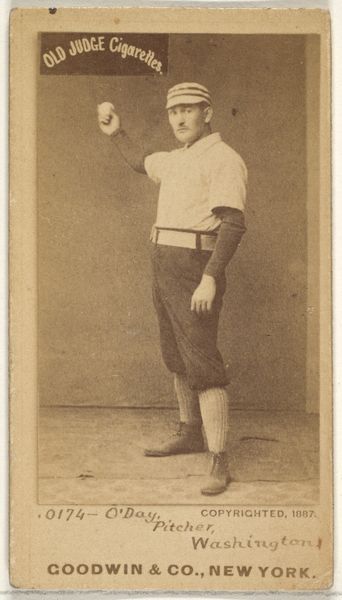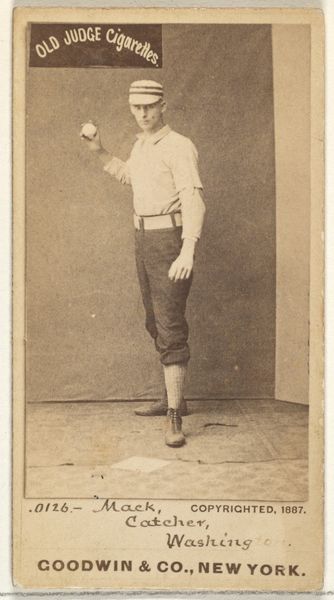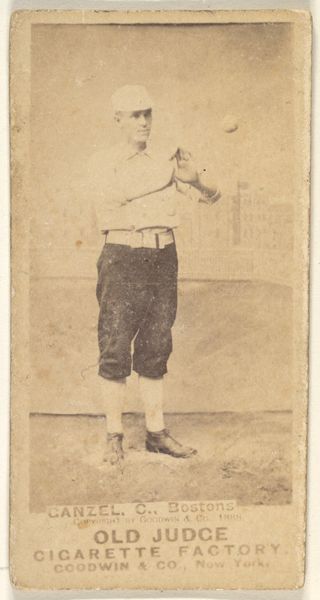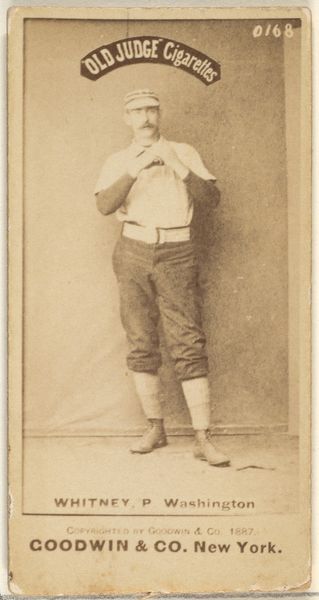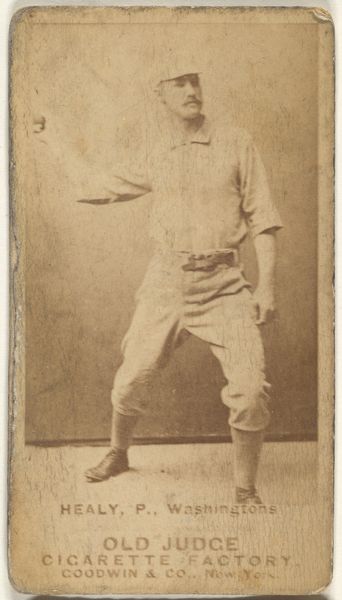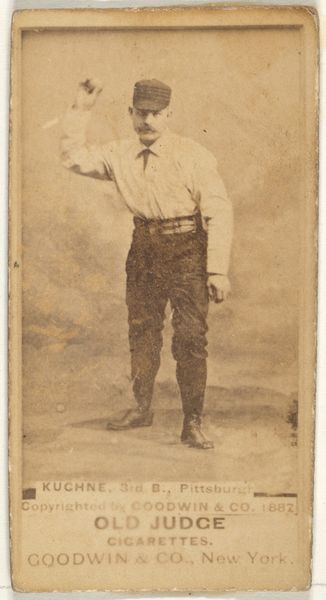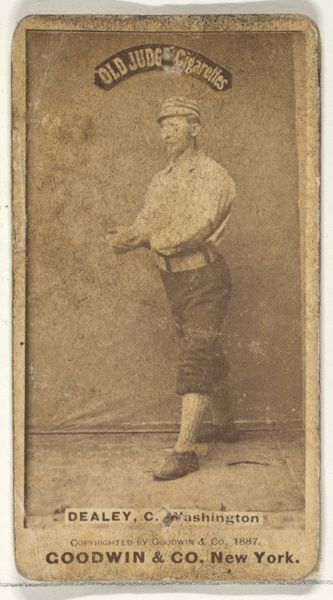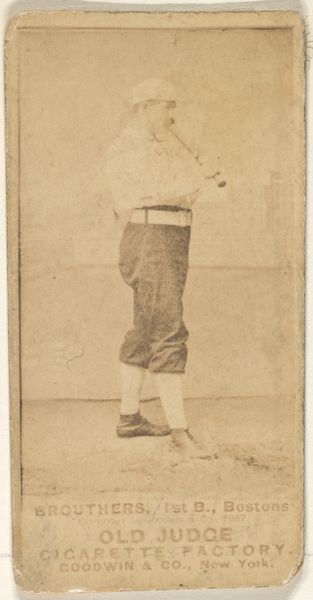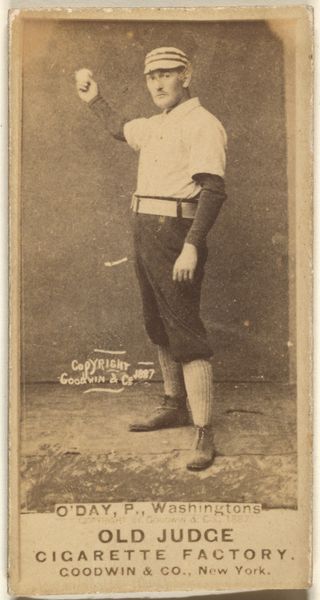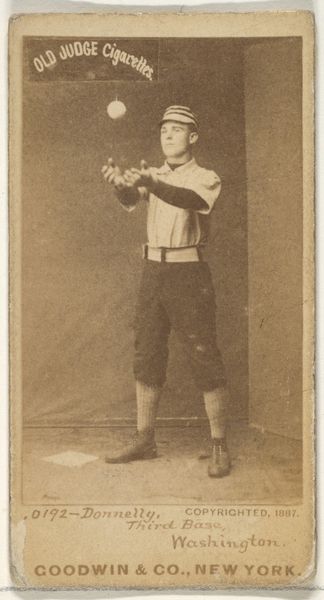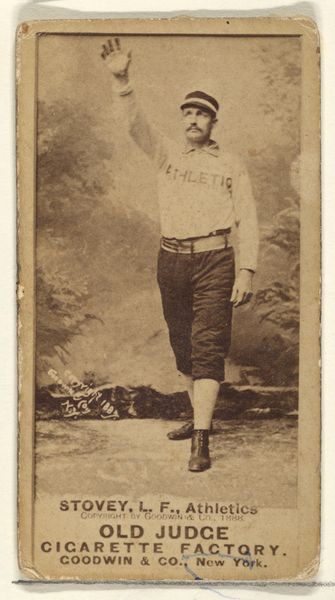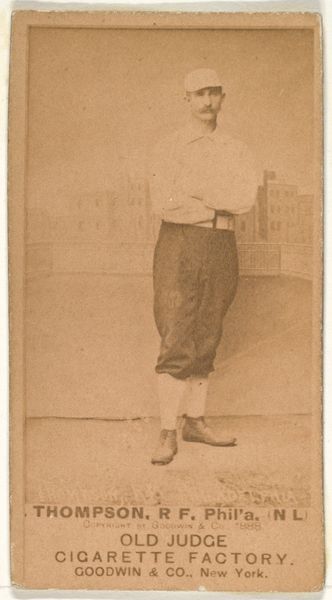
Patrick "Pat" E. Dealy, Catcher, Washington Nationals, from the Old Judge series (N172) for Old Judge Cigarettes 1887
0:00
0:00
print, photography
#
portrait
# print
#
baseball
#
photography
#
19th century
#
men
#
athlete
Dimensions: sheet: 2 11/16 x 1 3/8 in. (6.9 x 3.5 cm)
Copyright: Public Domain
Editor: So this is an 1887 photographic print featuring Patrick “Pat” E. Dealy, a catcher for the Washington Nationals. It's part of the Old Judge series of baseball cards. There's something hauntingly nostalgic about it. It makes me wonder about the person behind the image and his world. What do you see in this piece? Curator: Beyond its appeal as a piece of baseball history, this image opens up discussions about representation and commercial culture in the late 19th century. The fact that Goodwin & Company, a cigarette manufacturer, used athletes to promote their products highlights the intertwining of consumerism and masculine ideals. We should consider who was included and excluded from these images. For example, where are the images of women athletes? Editor: That's interesting. I hadn't considered the implications of the advertisement itself. The baseball player seems a bit idealized in his posture. Curator: Exactly! What is the effect of seeing an athlete presented in such a manner? Consider the era, where immigration and anxieties about masculinity were rampant. Were images like this designed to project a certain vision of American identity tied to athleticism, strength, and perhaps even a subtle form of racial and social control? Who was allowed to participate and who benefited from it? These images sold a narrative. Editor: That's a much deeper perspective than I had initially. So it's not just a baseball card, but a reflection of social values and power structures at the time. Curator: Precisely. By analyzing the historical context, production, and reception of this photograph, we gain insight into how images shape and reflect cultural ideologies. What do you make of the relationship between tobacco and early professional baseball? Editor: That really highlights how much context shapes our understanding. Looking at this now, I see an image steeped in the social and economic currents of its time, more than just a portrait of a baseball player. Curator: Indeed. It reminds us that art is never created in a vacuum, and analyzing art with an activist lens opens new avenues for interpreting not only the past but also the present.
Comments
No comments
Be the first to comment and join the conversation on the ultimate creative platform.
